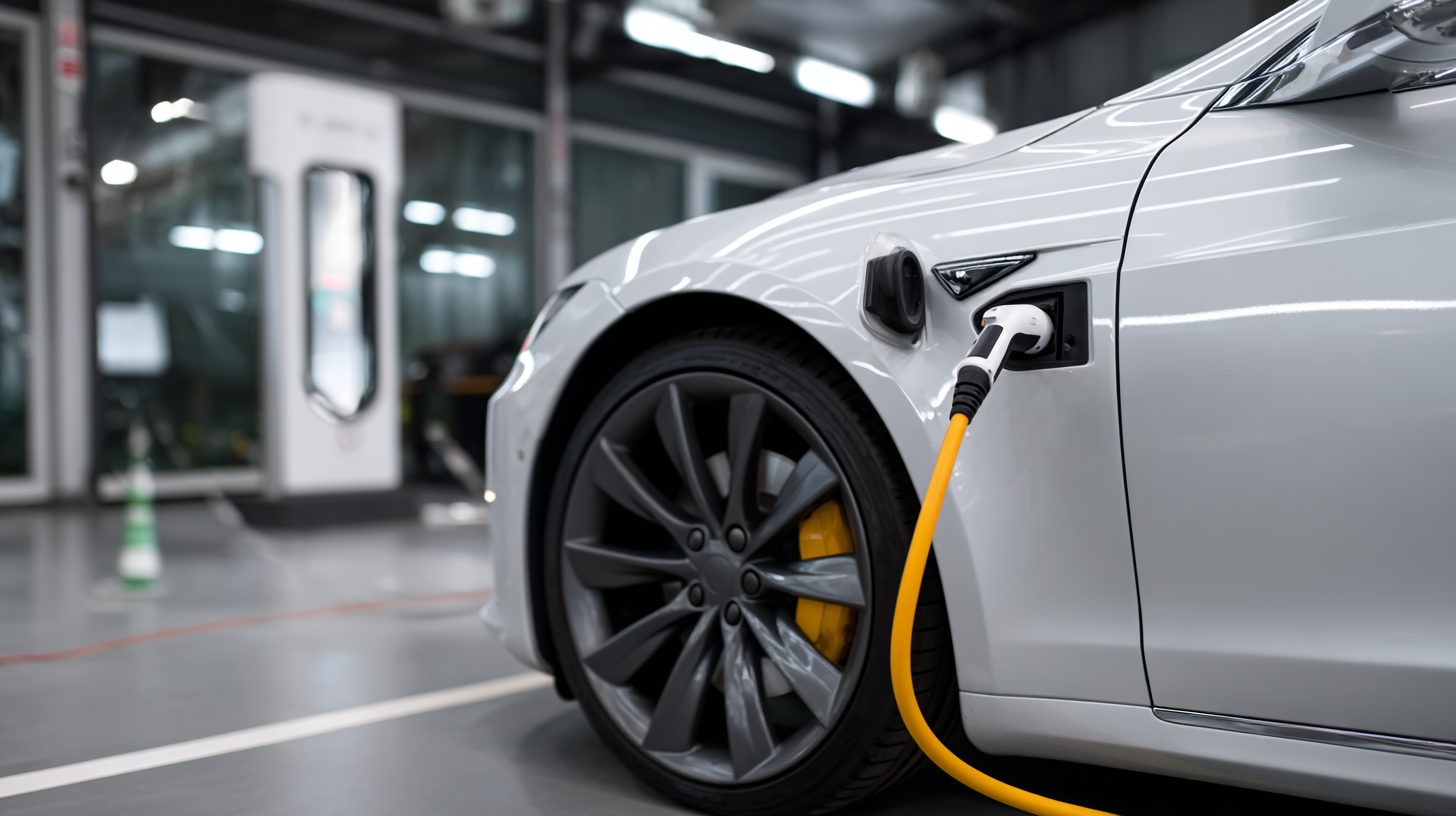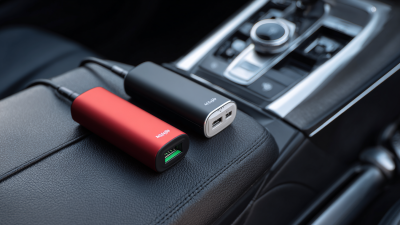
Wall Mounting EV Charge Station
How to Choose the Right AC EV Charging Cable for Your Electric Fleet: A Comprehensive Guide
As the electric vehicle (EV) market continues to surge, with global sales projected to reach over 30 million units by 2030 (International Energy Agency, 2022), the demand for efficient and reliable charging solutions has never been greater. For businesses operating electric fleets, selecting the right AC EV charging cable is crucial for optimizing fleet operations and ensuring the seamless integration of charging systems. According to a recent report by the Electric Power Research Institute, the proper choice of charging infrastructure can enhance vehicle uptime by as much as 20%. Understanding the various types of AC EV charging cables and their specifications not only aids in maximizing charging efficiency but also contributes to the overall longevity of the fleet's battery life. This comprehensive guide aims to equip fleet managers with the essential knowledge needed to navigate the complexities of AC EV charging cables, helping them make informed decisions in line with industry standards and future-proofing their operations.

Key Factors to Consider When Selecting AC EV Charging Cables
When selecting AC EV charging cables for your electric fleet, several key factors must be taken into account to ensure optimal performance and efficiency. First and foremost, compatibility is critical. Different electric vehicles may require specific charging connectors, such as Type 1 or Type 2. It is essential to verify that the cables you choose are compatible with the vehicles in your fleet to prevent any operational downtime.
Another important consideration is the cable’s amperage rating. Higher amperage cables can charge vehicles faster, but you should assess the power supply options available at your charging locations. Balance between speed and the existing electrical infrastructure to avoid any overload issues. Additionally, pay attention to the length of the cables. Longer cables provide flexibility in parking configurations but may cause voltage drop issues, while shorter cables are easier to manage but may limit charging options. Taking these factors into account will help ensure that you select the right AC EV charging cables for your fleet needs.

Understanding AC Charging Types and Compatibility for Electric Vehicles
When it comes to understanding AC charging types and compatibility for electric vehicles, it is important to explore the various charging cables available in the market. The electric vehicle (EV) charging cable market encompasses a range of products necessary for powering electric vehicles across residential, commercial, and public charging networks. These cables come in different types, including both standard AC chargers and advanced solutions such as bidirectional chargers which allow for Vehicle-to-Grid (V2G) capabilities.
Currently, the V2G market is expanding rapidly, with projections indicating a significant increase in value over the next decade. In 2023, the global V2G market is valued at approximately $11.39 million, with expectations to grow to $116.53 million by 2032. This growth not only highlights the evolving landscape of EV charging technology but also emphasizes the need for compatible charging solutions that can seamlessly integrate with existing and future electric fleet infrastructures.
Moreover, as wireless charging technology continues to become more mainstream—previously observed in smaller devices like smartphones—its potential application in electric vehicle charging is garnering attention. Wireless charging operates through near-field induction, allowing for convenient, cable-free power transfer. As this technology matures, it may redefine the standard charging experiences, augmenting the appeal of electric vehicles and promoting wider adoption in various sectors.
AC EV Charging Cable Compatibility for Electric Fleets
This chart illustrates the compatibility of various AC EV charging cable types with electric vehicles in a typical fleet. It provides a breakdown of the number of vehicles compatible with each charging type, aiding in selecting the appropriate charging solution for fleet management.
Evaluating Cable Length and Flexibility for Your Fleet's Needs
When selecting the right AC EV charging cable for your electric fleet, evaluating cable length and flexibility is paramount. According to a report from the International Energy Agency (IEA), the global electric vehicle stock reached over 10 million units in 2020, emphasizing the growing need for efficient charging solutions. For fleets, longer cables can significantly improve accessibility, allowing for charging in tighter spaces without the hassle of repositioning vehicles. A cable length of at least 20 feet is often recommended for commercial applications, ensuring versatility in various parking lot configurations and reducing the risk of damage to both the cable and the vehicle.
Flexibility is another critical factor to consider. The ability to maneuver the cable easily can prevent wear and tear, which is essential for fleet operations that may involve frequent use. A study by Alternative Fuels Data Center (AFDC) highlights that well-designed, flexible charging cables not only enhance user experience but also reduce the likelihood of downtime due to cable damage. Investing in cables made from high-quality, flexible materials can lead to better durability and performance, ultimately contributing to the efficiency of your fleet operations. Thus, both length and flexibility should be prioritized to ensure that your electric fleet remains operational and efficient.
How to Choose the Right AC EV Charging Cable for Your Electric Fleet: A Comprehensive Guide
| Cable Type | Length (ft) | Max Power (kW) | Flexibility Rating | Typical Use Case |
|---|---|---|---|---|
| Type 1 | 25 | 7.2 | High | Residential charging |
| Type 2 | 40 | 22 | Medium | Public charging stations |
| CCS | 30 | 50 | Low | Fast charging stations |
| CHAdeMO | 35 | 62.5 | Very High | DC fast charging |
Exploring Charging Speed: Amp Ratings and Their Importance
When selecting the right AC EV charging cable for your electric fleet, one crucial factor to consider is the amp rating. The amp rating of a charging cable determines the speed at which energy is delivered to the vehicle's battery, directly impacting the efficiency of your fleet’s operations. For example, higher amp ratings can allow for faster charging times, which is essential for fleets that require short downtimes between operations. Understanding the specific amp ratings that suit your fleet vehicles is key in ensuring they remain operational without unnecessary delays.
Additionally, it’s important to consider the compatibility of your fleet vehicles with the chosen charging cable's amp rating. Not every electric vehicle can accept a high amp charge, so inadvertently selecting a cable with too high an amp rating can lead to underutilization or even potential damage to the vehicle's charging system. Balancing the need for speed with the capabilities of your electric vehicles ensures that your fleet remains efficient and safe, making it vital to fully understand each vehicle’s specifications alongside the technical features of the charging cable. This thoughtful approach to selecting amp ratings for your charging cables not only optimizes your fleet's performance but also supports long-term sustainability.

Safety Standards and Certifications: Ensuring Compliance for Your Fleet
When selecting AC EV charging cables for your electric fleet, safety standards and certifications play a pivotal role in ensuring compliance and operational integrity. According to a recent report by the International Electrotechnical Commission (IEC), nearly 30% of electric vehicle incidents stem from non-compliance with safety standards. This emphasizes the necessity of choosing cables that meet or exceed industry standards such as IEC 61851 and UL 2251, which ensure the cables can withstand high voltages and environmental conditions without compromising safety.
Tip: Always verify that your charging cables are certified by recognized organizations like the Underwriters Laboratories (UL) or the American National Standards Institute (ANSI). This ensures that the cables have undergone rigorous testing and adhere to established performance criteria.
In addition to choosing certified cables, it’s crucial to assess their compatibility with various EV models within your fleet. According to the Department of Energy, proper matching of charging infrastructure with vehicle requirements can enhance efficiency by up to 20%. Make use of the compatibility charts provided by manufacturers, and consider investing in multi-standard chargers that can cater to different vehicles, streamlining your charging operations.
Tip: Regularly conduct inspections of your cables and connectors to identify any signs of wear or damage. This proactive approach will help maintain safety and prolong the lifespan of your equipment, reducing the risk of unexpected downtimes.
Related Posts
-

Noteworthy Variants of AC EV Charging Cables You Should Consider
-

Embracing Innovation: The Future of EV Charger Stations for Sustainable Transportation
-

5 Reasons Why the Ac V2L Cable is the Best Choice for Electric Vehicle Charging in 2023
-

Ultimate Guide to Choosing the Right Ev Charger Station for Your Needs
-

Unleashing Innovation in Portable EV Chargers from China Quality Assurance for Global Buyers
-

Challenges Encountered with Ac V2l Cable in Electric Vehicle Charging

